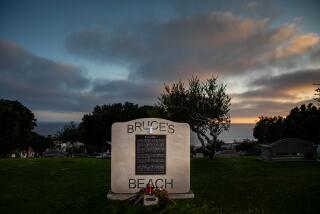Editorial: A judge says a museum can keep its Nazi-looted art. That’s just not right

L.A. Times Today airs Monday through Friday at 7 p.m. and 10 p.m. on Spectrum News 1.
A Camille Pissarro painting looted by Nazis from a Jewish woman in Berlin rightfully belongs to the Spanish museum that ultimately acquired it, or so a U.S. District Court judge in Los Angeles has ruled. His decision was not just a blow to the family members who filed the lawsuit, but also a troubling indication of how difficult it is to carry out the restitution of art works stolen in that era.
No one disputes that Lilly Cassirer was forced to give up the painting of a Paris streetscape, “Rue Saint-Honore, Apres Midi, Effet de Pluie,” in exchange for an exit visa out of Berlin. What is disputed is whether the Thyssen-Bornemiesza Museum in Madrid, which bought the painting as part of the late Baron Hans Heinrich Thyssen-Bornemisza’s collection in 1993 and has displayed it since the early ’90s, is the rightful owner.
Two of Cassirer’s descendants have waged a 20-year battle to get back the painting, last valued at $30 million.
Similar battles have played out in courts and auction houses around the world as the whereabouts of artistic works have become easier to track online. Meanwhile, governments, museums, and auction houses have set stricter rules for determining the provenance of pieces they acquire and for returning pieces they realize were stolen.
But none of that makes restitution simple — as the Cassirer case, which has been in federal court for years, has shown.
The museum’s failure to investigate the provenance of the painting may have been irresponsible, he wrote, but it was not criminal.
The painting’s journey from Cassirer’s parlor in Berlin to a palace in Madrid that houses the Thyssen-Bornemiesza museum has been long and complicated. But according to Judge John F. Walter, the bottom line is that, under Spanish law, the painting (despite being stolen from Cassirer) now belongs to the museum.
Walter found that the baron, a German industrialist and “sophisticated art collector,” did a poor job researching the history of the painting when he bought it in the late 1970s — ignoring such clues as intentionally removed labels on the back of the painting and a torn label that indicated the painting had been in Berlin. Also, Pissarros were often looted by the Nazis.
The Cassirer family and their lawyers have long maintained that there is ample evidence that the baron knew very well he was buying a looted painting. Nonetheless, Walter found that the baron did not have “actual knowledge” that the painting was stolen. Nor did the museum have certain knowledge of the theft, Walter ruled. The museum’s failure to investigate the provenance of the painting may have been irresponsible, he wrote, but it was not criminal. The Cassirer family’s lawyers have said they will appeal.
Officials at the museum, which is owned by the Kingdom of Spain and operated by a foundation, say they would not have purchased the Pissarro had they known it had been looted. “If the investigation had revealed the slightest problem or if we (the advisors), or the Kingdom or the Foundation had had the slightest doubt about any painting (in terms of title or artistic authorship) it would have been immediately excluded,” a former legal advisor to the museum told the court.
That doesn’t explain why the Thyssen-Bornemiesza has continued to hold on to the painting and has refused to compensate the Cassirers for their loss. That’s a failure of its moral responsibility — a responsibility that the Spanish government, which owns the collection, committed to take on.
Enter the Fray: First takes on the news of the minute »
Two decades ago, Spain and nearly four dozen other countries signed a nonbinding international agreement, the Washington Principles, dedicated to reaching “a just and fair solution” to cases of looted art when the owners or their heirs can be identified. Even Walter said in his ruling that the Thyssen’s refusal to return the painting was inconsistent with the Washington Principles. But he could not force the museum to “comply with its moral commitments.”
The museum shouldn’t need a court order to do the right thing, and it’s unconscionable after all these years in possession of a looted work of art that the museum has not done so. This is simply Spain ignoring its moral obligations, said Stuart Eizenstat, the former undersecretary of State who was the main negotiator of the Washington Principles.
The museum should work with the Cassirer family to come up with a reasonable solution. That doesn’t necessarily mean returning the painting. The museum could offer to pay the family in order to keep the painting. But refusing to recognize any obligation to Cassirer’s heirs is shameful.
Follow the Opinion section on Twitter @latimesopinion or Facebook
More to Read
A cure for the common opinion
Get thought-provoking perspectives with our weekly newsletter.
You may occasionally receive promotional content from the Los Angeles Times.









